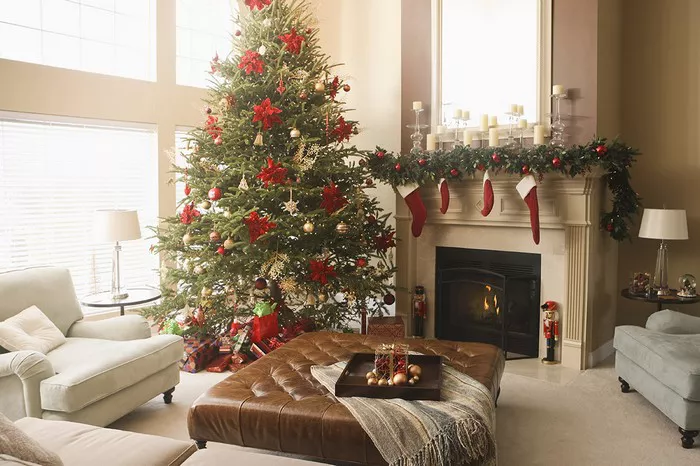Decorating a Christmas tree is a cherished tradition observed by millions of people around the world each year. This festive activity marks the beginning of the holiday season, symbolizing joy, unity, and the spirit of giving. Beyond its aesthetic appeal, the act of adorning a Christmas tree holds deep cultural, religious, and personal significance for many individuals and communities globally.
Origins and Evolution of the Christmas Tree Tradition
The tradition of decorating evergreen trees dates back centuries, with roots in ancient civilizations such as the Egyptians, Romans, and Celts, who revered evergreen plants as symbols of eternal life. However, the modern Christmas tree tradition is closely associated with Christian customs and has evolved over time through various cultural influences.
One of the earliest documented instances of a decorated Christmas tree can be traced back to 16th-century Germany, where devout Christians brought decorated trees into their homes. These trees were adorned with fruits, nuts, and candles to symbolize the light of Christ. Over the centuries, the tradition spread throughout Europe and eventually across the Atlantic to North America.
Symbolism and Significance
The symbolism behind the Christmas tree is multifaceted and varies among different cultures and traditions. However, several key themes resonate across various interpretations:
1. Everlasting Life and Renewal: The evergreen tree, which retains its green foliage throughout the year, symbolizes resilience, continuity, and everlasting life. In the context of Christmas, it represents the eternal life offered through Jesus Christ.
2. Light and Hope: The lights adorning the tree symbolize hope and light in the darkness, reflecting the spiritual significance of Christmas as a time of joy and illumination.
3. Unity and Togetherness: Decorating the Christmas tree often involves family and community participation, fostering a sense of togetherness and shared joy during the holiday season.
4. Generosity and Giving: The act of decorating a Christmas tree often involves the exchange of gifts placed under the tree, echoing the generosity associated with the gifts of the Magi to the infant Jesus.
Cultural Variations in Christmas Tree Decorations
Across different regions and cultures, the decorations used on Christmas trees can vary widely, each carrying its own symbolic meaning:
1. Ornaments and Baubles: Glass ornaments, baubles, and tinsel are commonly used decorations in many Western countries. These ornaments often depict symbols of Christmas such as angels, stars, and snowflakes.
2. Lights: String lights are a ubiquitous decoration, symbolizing the light of Christ or simply adding a festive glow to the tree.
3. Garlands: Garlands made of popcorn, cranberries, or tinsel are traditional decorations that add texture and color to the tree, each with its own cultural significance.
4. Topper: The star or angel placed atop the tree serves as a reminder of the Star of Bethlehem or the angelic heralds of Christ’s birth.
SEE ALSO: What to Do with Christmas Crackers
Modern Trends and Innovations
In recent years, there has been a surge in creative and innovative approaches to decorating Christmas trees, reflecting contemporary tastes and preferences:
1. Themed Trees: Many households and businesses opt for themed trees, such as winter wonderland themes, traditional red and green themes, or even pop culture-inspired themes.
2. DIY and Eco-Friendly Decorations: There is a growing trend towards handmade decorations and environmentally friendly alternatives, such as recycled ornaments or natural materials.
3. Technological Advancements: LED lights and programmable light displays have revolutionized Christmas tree decorations, offering customizable light patterns and energy efficiency.
Psychological and Social Implications
Psychologically, decorating a Christmas tree can evoke feelings of nostalgia, happiness, and anticipation, particularly for children and families. The ritual of decorating together can strengthen familial bonds and create lasting memories. Socially, the presence of a decorated Christmas tree in public spaces or workplaces fosters a sense of community and shared celebration among diverse groups of people.
Conclusion
In conclusion, decorating a Christmas tree is much more than a festive custom; it is a meaningful tradition that bridges generations, cultures, and beliefs. From its ancient origins to its modern-day interpretations, the Christmas tree embodies themes of hope, unity, and generosity that resonate universally. As we continue to celebrate this cherished tradition, let us remember the profound symbolism behind each ornament and light, and the joyous spirit that it represents.
Whether adorned with heirloom ornaments passed down through generations or adorned with innovative decorations reflecting contemporary trends, the Christmas tree remains a timeless symbol of the holiday season—a beacon of light and joy in homes and hearts around the world.
Related Topics:



























